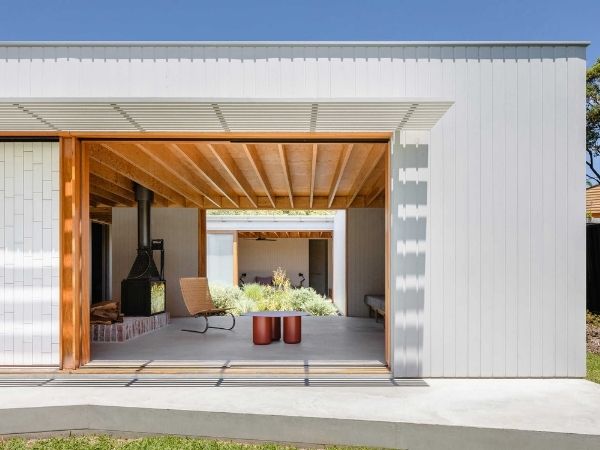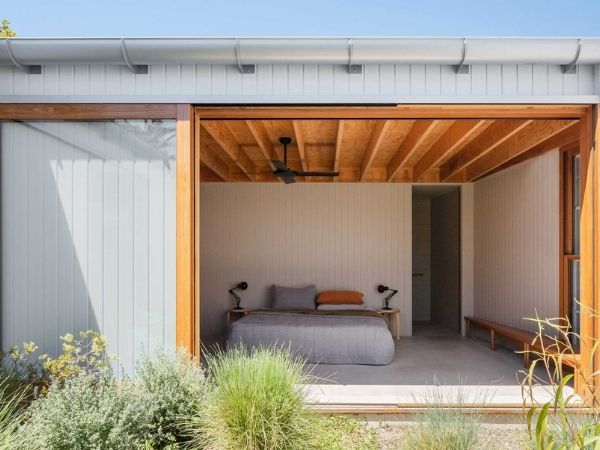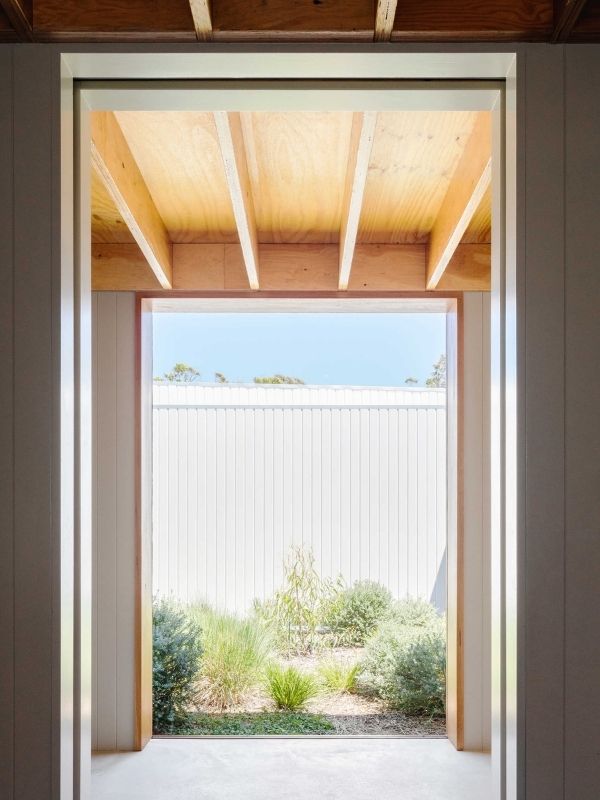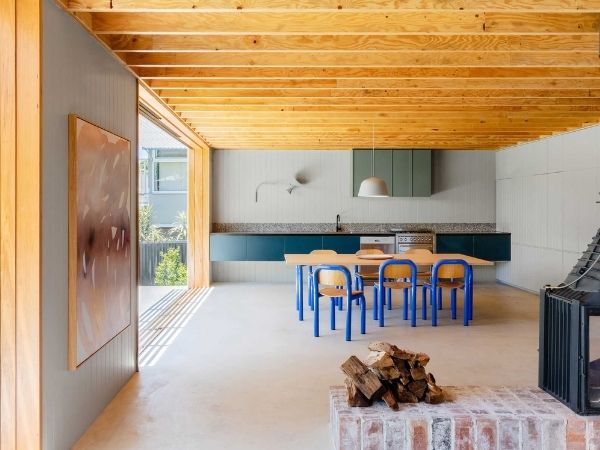Tribe Studio Architects’ latest residential project is a city sanctuary located in Bundeena, south of Sydney. A sustainable holiday home authentic to the Australian aesthetic, the dwelling is cost-effective, environmentally-aware and supportive of local trades.
Channelling the modest fisher-cottages within the area, the pared-back timber courtyard home celebrates its place among nature. It is an understated economical achievement with high levels of architectural and environmental integrity.

“This house is a retreat from busy city life that encourages a slower way of living by the beach. It is a garden and cooking focused holiday home and a place where children and adults are connected,” explains Hannah Tribe, principal of Tribe Studio Architects.
Situated 100-metres from Gunyah beach, the block has seven adjoining neighbours, making its context both coastal and suburban. Tribe opted against a double storey home in favour of tackling the larger challenge of creating an affordable and sustainable prototype home, with potential to be recreated across a variety of environments.
“We could have had glorious views from a second storey, however we felt that reinforcing the local vernacular of single storey timber cottages was important, and that an introspective garden diagram was preferable to outward looking in this context,” says Tribe.

“This house is an attempt to achieve a high level of architectural and sustainable outcomes at a low cost. It is an experiment in delivering a more thoughtful kit home”.
The U-shaped home wraps around an internal courtyard and responds to multiple orientations. The mathematical rigour and strict organisational framework starts with a concrete slab and modular timber frame that cleverly achieves large spans of up to 5.4 metres without structural steel.

Living and sleeping spaces wrap around the courtyard and face north to the rear garden. Two adults’ bedrooms and a kids’ room that can sleep up to six children, underlining its ability to be a family home, with built-in sofas that double as beds in the lounge ensuring the house can accommodate up to twelve people at one time. The laundry and bathroom are located at the entry, in a bid to ensure beach towels, tossed togs, wetsuits and thongs aren’t carried into the house.
A textural palette of raw materials contrasts the architectural rigour. Timber used throughout is certified plantation. Laminated veneer lumber (LVLs) and structural ply ceilings are clear matt finished to reveal their knots and imperfections. There is no plasterboard, just crisply painted timber walls and hardwood window joinery in Australian Blackbutt. The finish on the structural concrete floor is unpolished so that wet and sandy footprints are a non-issue.

Landscape architect Christopher Owen was approached to enhance the garden. His landscape plan fosters natives and endemic species that attract bird life including kookaburras, tawny frogmouths, cockatoos, fairy wrens and sea eagles. The only non-indigenous plants are edibles. These were originally dispersed throughout the garden but have been moved in an attempt to deter roaming deer from grazing. Now the courtyard is the ‘food bowl’ of the house.
Sustainable measures embedded in Tribe’s philosophy are expressed throughout this house. Eschewing structural steel was both an eco- and budget-friendly choice. Passive cooling and heating is achieved through the thermal mass of the concrete slab and by orienting the house to prevailing cooling breezes. All windows are double glazed and lightweight walls are heavily insulated. Adding adjustable shading to east and west windows as well as awnings to north facing windows reduces solar gain. As a result, there is no need for air-conditioning, just ceiling fans in the bedrooms.

The highly efficient French Philippe Chemise fireplace became a justifiable extravagance given it heats the entire house. Lighting is all LED. A 5kw photovoltaic array, separate solar hot water, and provision for a future battery leans the home toward electrical self-reliance. Rainwater harvesting and recycling to all WCs, washing machine and garden irrigation makes the home water-wise. The home is also socially sustainable, with the step-less design ensuring occupants can happily age-in-place and to suit any limited mobility needs of occupants and visitors.
To read more about the home, click here.

